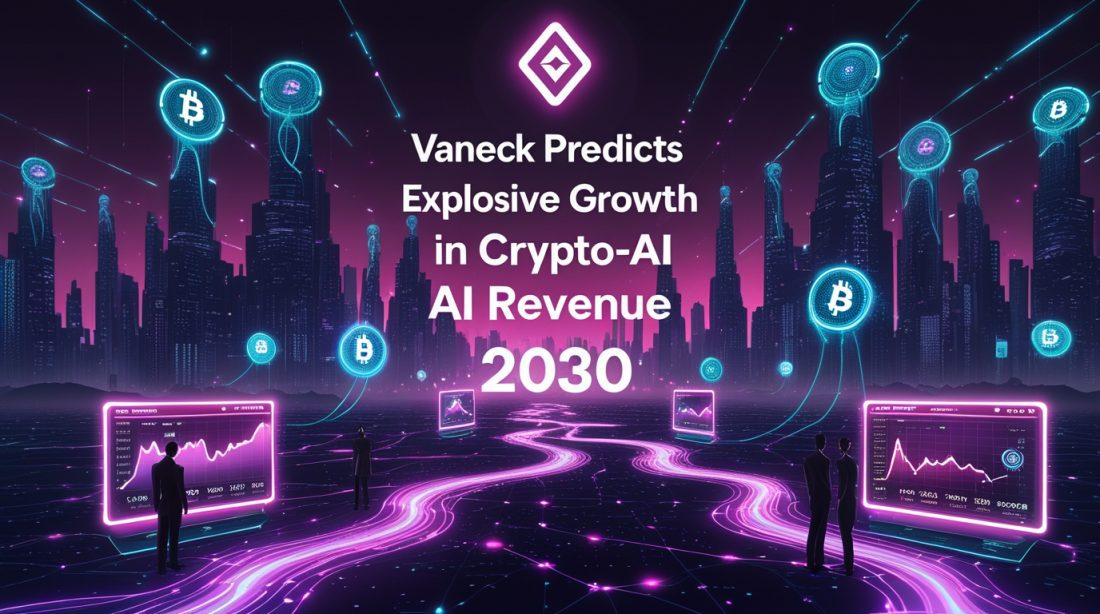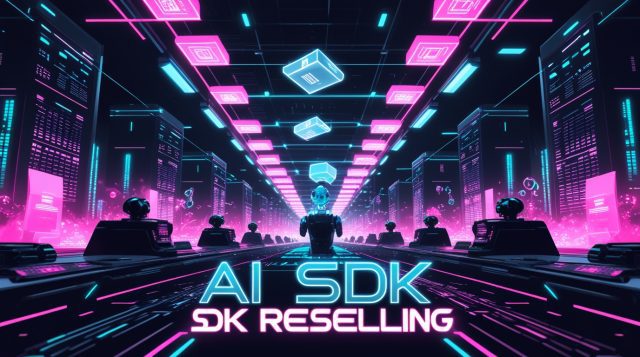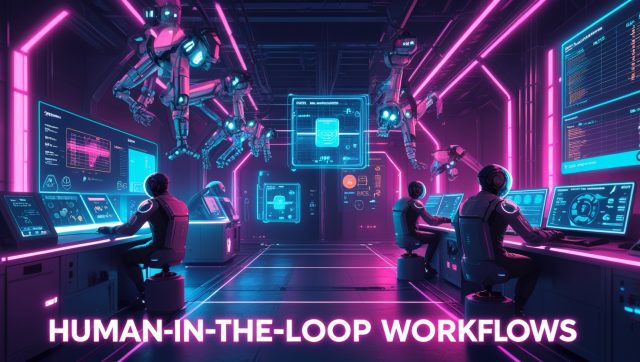VanEck projects crypto AI revenues will hit $10.2 billion by 2030 in its base case, signaling the start of a major technological synergy. This isn’t just a speculative guess; it’s a data-driven forecast from a global investment manager actively researching the digital assets space. The convergence of artificial intelligence and blockchain is poised to create a new multi-billion-dollar market, and the foundational work is happening now in 2025.
The Bottom Line: VanEck Predicts Explosive Growth in Crypto-AI Revenue — Here’s the Roadmap
VanEck’s research outlines a clear financial future for the crypto AI sector, projecting annual revenues could reach $10.2 billion by 2030 in their base case scenario. Their analysis also presents a bear case of $0.36 billion and a bull case of a staggering $51.62 billion.
This projection is based on a detailed breakdown of the AI value stack and the specific market share they believe crypto-based solutions can capture:
| AI Business Segment | Base Case Projected Revenue (2030) | Crypto Base Case Market Share | Crypto Base Case Revenue |
|---|---|---|---|
| AI Software | $125.50 billion | 5.00% | $6.27 billion |
| AI Infrastructure (IaaS) | $47.44 billion | 4.00% | $1.90 billion |
| AI Safety | $22.34 billion | 5.00% | $1.12 billion |
| AI Identity | $8.78 billion | 10.00% | $0.88 billion |
| Total Crypto AI Revenue | $10.17 billion |
Source: VanEck Research, based on data from Morgan Stanley and Bloomberg Intelligence
Why Crypto and AI Are Converging
Blockchain technology offers unique foundational elements that address critical challenges in the AI industry.
Why Blockchain is a Missing Piece for AI
Crypto provides transparency, immutability, clearly defined ownership properties, and an adversarial testing environment. VanEck’s research suggests these properties are “instrumental in allowing AI to reach its full potential.” In essence, blockchain solves coordination problems that AI alone cannot, using token rewards to bootstrap networks of people, compute, and monetary resources. For a deeper dive into how blockchain-verified systems are tackling issues like fraud in other sectors, check out how blockchain-verified reforestation is fixing carbon credit fraud on Creedtec.
Why Decentralized Compute is Gaining Traction
VanEck projects the market for AI infrastructure-as-a-service (IaaS) could reach $47.44 billion by 2030. While hyperscale’s like Amazon and Google will handle the “base load,” blockchain-apportioned infrastructure is poised to act as a “peaking” provider. It offers on-demand services, shorter contracts, and more customized compute environments, which are vital for developers of bespoke AI models. This shift mirrors trends in industrial applications, where decentralized AI revenue is driving automation profits, as explored on Creedtec.
Why AI Needs On-Chain Identity and Safety
As AI agents proliferate, verifying their identity and ensuring their safety becomes a monumental task. Public blockchains, with their unforgeable digital signatures and data integrity, can provide mathematical proof of an agent’s humanness or a model’s effectiveness. VanEck sees this “Sybil defense mechanism” as a critical service, estimating the crypto identity market for AI could be worth $880 million by 2030. This is particularly relevant as AI safety concerns grow, such as those surrounding AI-generated content, as discussed in the analysis of Grok’s challenges with CSAM detection on Creedtec. For a broader perspective on AI safety, MIT Technology Review offers in-depth coverage of emerging risks.
The 2025 Landscape: Laying the Groundwork
The trends fueling VanEck’s long-term forecast are already in motion this year. We are witnessing the early, tangible steps that build the path to that $10.2 billion future.
A significant driver in 2025 is the explosion of AI agents. VanEck predicted that the number of AI agents operating on-chain would surpass one million in 2025. These are not simple chatbots; they are specialized bots that autonomously perform complex on-chain tasks, from maximizing DeFi yields to managing social media engagement. Protocols are now providing tools that allow non-experts to create and lease out their own AI agents, leading to an “enormous proliferation” of this new digital workforce. This aligns with the rise of AI-driven trading platforms like Injective, which is reshaping financial markets, as detailed on Creedtec. For further reading on AI agent growth, Forbes covers the latest advancements in autonomous AI systems.
Furthermore, the demand for decentralized compute is no longer theoretical. The soaring demand for AI capacity is creating a bottleneck for computing power, and this is directly impacting the crypto world. As of September 2025, a major trend has been the “AI-driven pivots” of Bitcoin miners. These companies are leveraging their access to abundant power and data center infrastructure to pivot into providing high-performance computing (HPC) services for AI companies.
Real-World Shifts: Bitcoin Miners Pivot to AI
The theoretical synergy between crypto infrastructure and AI is now a concrete business reality. Bitcoin miners are leading a dramatic shift, publicly re-rating their businesses to meet the exploding demand for AI compute.”Over the past month, Bitcoin mining stocks with clear AI/HPC pivots gained an average of 57%, adding ~$16B to their collective market capitalization.” – VanEck Mid-September 2025 Bitcoin ChainCheck
This isn’t a minor trend. VanEck reported that among the four Bitcoin miners with AI colocation deals, an estimated 61% of their capacity had already been pivoted to AI workloads as of mid-September 2025. Landmark deals, like TeraWulf’s $6.7 billion agreement with AI cloud platform Fluidstack, underscore the immense financial value being assigned to these power assets. This pivot provides a real-world, revenue-generating bridge between the physical infrastructure of crypto and the technological future of AI. For more on this trend, see how Bitcoin miners are pivoting to AI infrastructure in 2025 on Creedtec.
Frequently Asked Questions
What is VanEck’s most optimistic forecast for crypto AI revenues?
In their most optimistic, or “bull case,” scenario, VanEck projects that annual revenues for crypto AI projects could reach a massive $51.62 billion by 2030. This scenario assumes higher overall AI adoption and a greater market share captured by crypto-based solutions.
How does crypto actually help AI development?
Crypto aids AI development in several concrete ways: by providing decentralized compute resources for training models, creating an adversarial testing environment to fine-tune AI, and using blockchain’s transparency for copyright protection, data integrity, and identity verification that AI systems will increasingly require.
Is AI a major trend in the crypto space in 2025?
Yes, absolutely. The integration of AI is a dominant narrative in 2025. This is evidenced by the rapid growth of on-chain AI agents and the significant business pivot of Bitcoin miners who are devoting their substantial power and infrastructure resources to support AI computation.
What is the bear case for crypto AI revenues?
VanEck’s “bear case” scenario is notably more conservative, projecting crypto AI revenues of $0.36 billion by 2030. This scenario would play out with slower AI adoption and crypto capturing a smaller slice of the AI value stack.
TL;DR: VanEck’s base case forecast projects the crypto AI sector will generate $10.2 billion in annual revenue by 2030. This growth will be driven by blockchain providing critical services to the AI industry, including decentralized computing power, safety mechanisms, and identity verification, with the foundational trends already visible in 2025.
Stay informed on the latest developments in digital assets. Get expert analysis and market insights delivered to your inbox.



